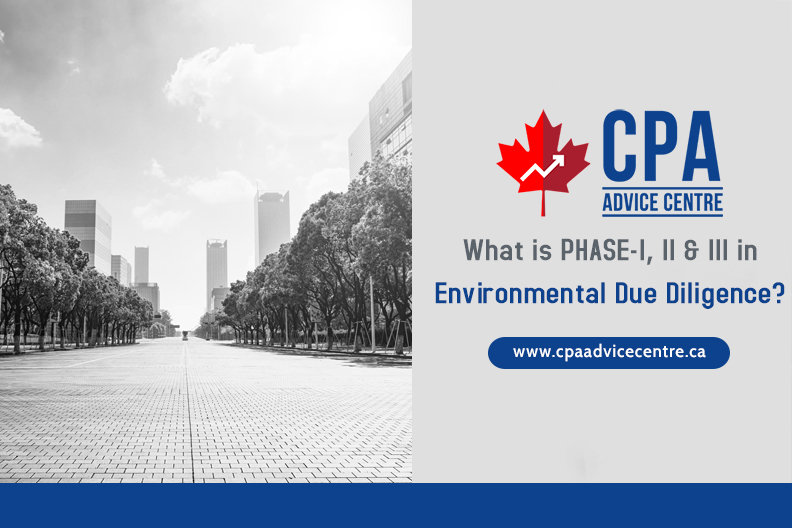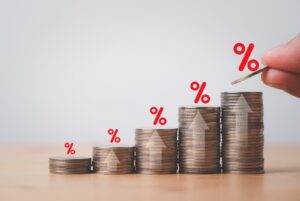An increasing number of people are getting involved in buying and selling property, much of which has been focused on the commercial sector. This rising popularity has led to more people wondering what’s involved in commercial real estate.
There may be more factors involved in this than many people may expect. As a result, many people may often become overwhelmed by the process, which can often lead to a variety of mistakes happening.
These can end up becoming quite costly for buyers, which is why most people will want to avoid them. One area that many people may overlook is performing their environment due diligence.
While there are quite a significant number of things that’s involved in buying some commercial property, this doesn’t mean that this form of due diligence should be overlooked. The primary reason behind this is that it can be a vital part of the process. This is something that many people may not realize that they’ll need to do and which they mightn’t know too much about it. Typically, there are three stages involved in environmental site assessment; Phase 1, Phase 2, and Phase 3. While this mightn’t mean a lot to some people who are looking to get involved in commercial property, they should. The primary reason behind this is that failing to perform this due diligence could mean that a property isn’t viable. As a result, a buyer could end up losing a significant amount of money on a transaction. An environmental site assessment (ESA) should play a large role in your decision before you close a deal. Typically, this will identify whether there’s any soil or groundwater contamination on a site. There are a few notable things that this ESA will look for, with the most common being:- Pesticides;
- Herbicides;
- Petroleum, and;
- Heavy Metals.
WHAT ARE THE ASSESSMENT PHASES & WHAT SHOULD BE DONE?
As most people may not know much about environmental due diligence, they often shouldn’t know what’s involved in the assessment phases. Failing to know much about this can often mean that certain aspects may be overlooked during the process. With how much can rest on the results of these tests, it’s vital that any potential property buyer knows as much as possible about the overall assessment and the phases that go into it. Three phases are involved in environment due diligence, each of which have several aspects to them. As such, it’s worth breaking the assessment down into each of these phases and looking at what makes up each of them. For more info you can also visit sarnail.com. PHASE I An ESA will naturally start with Phase 1, which typically looks for any visual clues that there may be any potential contamination. This will usually include the search for underground storage units, as well as anything else that could release contaminants. Alongside this, the consultant performing the assessment will look for documents related to past usage of the site alongside a neighboring property’s records. The primary reason behind this is that while some property owners will clean their site of any contaminants, the same may often not be said for neighboring businesses. Typically, the consultant will look back as far as possible in the property’s history to determine if there are any potential causes of contamination. In many cases, contamination is more likely with older buildings than newer ones, with there being a variety of reasons behind this. The primary reason behind looking back as far as possible is that, while some current premises mightn’t be able to leak any contaminants now, they might have previously. This is chiefly because the use of the property can change drastically over time. As a result, the level of unwanted chemicals being released can vary drastically from one application to another. In most cases, if you’re leasing a building, then you’ll need a Phase I ESA done before you can do so. This is chiefly because tenants may be held responsible for any leakage during their lease, regardless of whether they’re the cause. To avoid this, it’s recommended holding the assessment before a lease is signed. PHASE II If there are any issues identified during the first phase of the ESA, then the consultant will start Phase 2. During this phase, there will be a variety of tests done, such as soil sampling, among others. The majority of this will focus on the groundwater and soil, although there will also be a variety of tests done on the building itself. The results of these tests will dictate what should be done next, with these actions coming somewhat later than the rest of the process. Depending on which state or country you’re living in, you may need to file these results with authorities to make them publicly available. This has always been the case, and typically affects most Phase II results. As such, you should be able to check a property’s most recent assessment results with a certain amount of ease. However, this doesn’t mean that you should rely on them completely. There are a variety of things that can be affected by this, with the most notable being how old the previous results are. This is primarily because environmental protection regulations have become increasingly stricter over the past few years. As a result, if a property was deemed uncontaminated a decade ago, they mightn’t be so now, even if they have the same amount of contamination. This makes Phase II of an ESA quite important. PHASE III Phase 3 of an ESA is a term that’s used to refer to the report that a consultant that’s given to a property owner. Typically, there will be a variety of treatment alternatives, potential remediation and risk management, as well as several other things. The report will also include the steps needed to mitigate any environmental impact that could be occurring. It will also include any follow-up assessments for contamination if required. Once you have the report, it’s recommended that you follow the outlined steps as closely as possible. What work will need to be done will vary significantly from case to case, with this potentially costing a significant amount of money. However, this can be a long-term investment, as it avoids any fines or punishment for not acting.WHAT CAN HAPPEN IF YOU DON’T GET ONE?
The consequences of not getting an ESA before you purchase commercial property can be both time consuming and costly. To use an example, let’s say a person bought a property in cash without conducting any due diligence. They’ll then apply for financing to improve the property, which will then need an environmental assessment to be conducted. Once this has been done, it’s determined that the environment has been damaged and needs to be cleaned up. These leaves two options for the buyer. The first is that he pursues the person who sold him the property and gets them to pay for the costs of cleaning the area, which typically involves the court and a variety of other things. As a result, this may be too complex a route to take, which leaves open option two. This will involve paying the remediation costs himself, which can often cost up to $150,000, if not more depending on the size of contamination. Naturally, this is something that every buyer will want to avoid. The only way that this can be done is by avoiding the situation entirely. As a result, you’ll need to have an environmental site assessment done as early as possible. This isn’t something that many sellers should have an issue with, as it’s typically something that’s included in the overall transaction. By doing so, you’ll be able to avoid either paying thousands of dollars for remediation or pursuing the seller to cover the costs, neither of which is ideal. As a result, they should be avoided as much as possible, and you’ll be able to save yourself the hassle, as well as the money. Though this will mean more paperwork to deal with during the transaction, this will pay off in the long-term. For more info you can also visit sarnail.com.HOW MUCH TIME & MONEY WILL IT TAKE?
Getting an environmental site assessment can take quite a significant amount of time and money, although this is something that should pay off dividends once the transaction has been completed. However, many people mightn’t know how much money or time to put away for the assessment. What many people may be more concerned about is how much money the process will cost. Unfortunately, the process can be much pricier than you may believe, with the costs ranging anywhere between $4,000 to $20,000, and can even exceed up to $50,000. While the process can be quite expensive, it’s something that will be a necessary part of the process, especially if you’ll be getting financial help, which would often require the ESA. Despite being a relatively costly process, it’s something that will save you a significant amount of money in the long-term. This is especially true if you buy some commercial real estate that needs decontamination. For example, you could end up paying up to $50,000 for testing, regardless of whether this is before or after the sale. Should you do the ESA after the purchase and find that it needs to be cleaned etc., then you could be looking at a bill of up to $150,000 or more. As a result, you should end up saving yourself quite a significant amount of money, not to mention the time and effort that will be needed to be put into it. There may also be a variety of other costs associated with undoing the environmental damage, such as needing to have the property closed down while everything’s being fixed. This could cause an untold amount of money being lost for every day that the company isn’t in operation. This is something that everybody involved in the company will want to avoid.WHAT ARE THE APPLICABLE LAWS?
There are quite a significant number of rules and regulations regarding environmental protection, many of which can vary from state to state. While there are a variety of federal laws that apply, you may need to check any province-level and possibly even city-level rules that may affect the new property. You should know each of these regulations before you buy any commercial property and check the ESA results against them. By doing so, you should be able to ensure that the property is already adhering to these laws. Alongside this, you’ll be able to find out if there are any improvements that you’ll need to make. While you should be able to make improvements in the majority of cases, knowing whether they’re required in order to meet local laws can make quite a difference when buying a commercial property. Much of this will focus on how many contaminants are allowed to be released into the surrounding area. These laws will need to be followed as closely as possible as failing to do so could result in a variety of punishments. Depending on where the property is located, these punishments can range from a fine to removal of a business license to even incarceration, and possibly a combination of the three. However, the majority of this will vary significantly depending on laws and the extent of the violations taking place. By knowing how the buildings and surrounding property already compares to these environmental laws, you’ll be able to determine what work needs to be involved in meeting regulations. You should be able to expect that the property is already compliant. If not, then it’s recommended that you back out of the transaction or include a clause stating that the purchase will only go through when the property is compliant with these regulations.THE ENVIRONMENTAL INSURANCE AND CONTAMINATION PREVENTION
One thing that many people may not consider when they’re buying a property is getting environmental insurance. While this mightn’t be needed for many properties, it can be a recommended option for those that may cause contamination. Environmental contamination can occur in a variety of ways, with some of the more obvious being if you have fuel tanks on the property. By taking advantage of environmental insurance, you should be able to avoid many of the costs that are typically associated with undoing the potential damage. While this is a recommended route, the best thing to do can be to prevent this contamination as much as possible, regardless of whether you have insurance. There are a variety of ways that you’ll be able to do so, depending on your industry and how the company may be releasing contaminants. The primary ways that this can be done are ensuring that the property follows recommended best practices in the industry in a variety of ways. Some of the more notable of these include:- Leak prevention;
- The safe management of hazardous materials;
- High-quality storage facilities, and;
- Proper waste disposal.

















